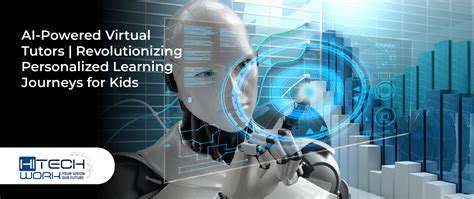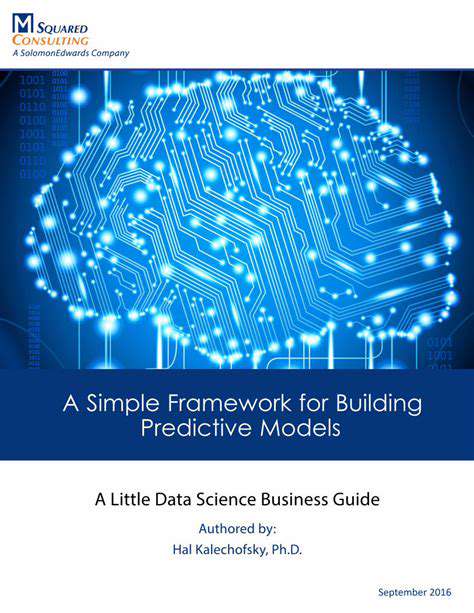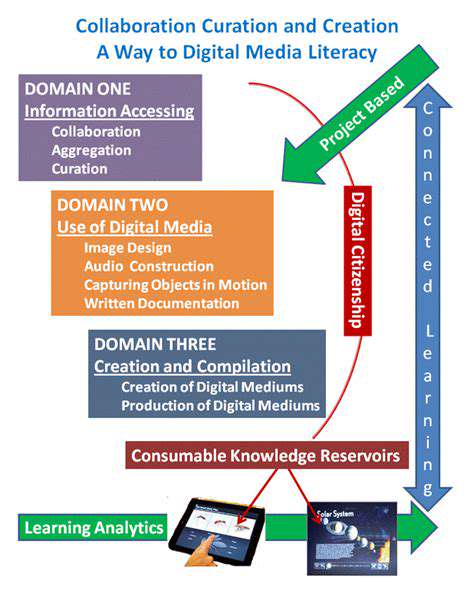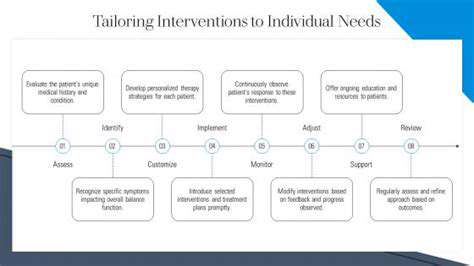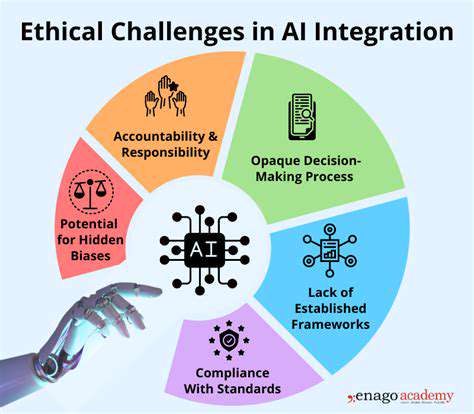The Synergy of Human and Artificial Intelligence in Teaching
Enhancing Accessibility and Inclusivity: AI as a Bridge to Learning
Accessibility Features for Diverse Learners
AI-powered tools can revolutionize learning environments by offering personalized support to students with diverse learning styles and needs. Adaptive learning platforms, powered by AI algorithms, can adjust content delivery and difficulty levels in real-time, catering to individual paces and comprehension. This dynamic approach ensures that every student receives the support they require, fostering a more inclusive and equitable learning experience. Furthermore, AI can generate alternative formats for learning materials, such as audio descriptions for visual content or text-to-speech capabilities, making educational resources accessible to students with disabilities.
Imagine a student with dyslexia struggling to read dense text. An AI-powered tool could automatically convert the text into an audio format, allowing the student to listen to the information instead of trying to decode it visually. Similarly, a student with visual impairments could benefit from AI-generated captions or descriptions of images, transforming static visual elements into engaging audio narratives. These tools are not just about convenience; they empower students with disabilities to actively participate in the learning process, bridging the gap to greater academic success.
Personalized Learning Pathways
AI excels at tailoring educational experiences to individual student needs. By analyzing student performance, engagement, and learning preferences, AI can create personalized learning pathways that cater to each student's unique strengths and weaknesses. This approach goes beyond simply adjusting content difficulty; it involves recommending relevant resources, suggesting supplementary activities, and identifying areas where additional support might be beneficial. This proactive support system fosters a more focused and effective learning journey, maximizing potential for each student.
These personalized pathways can also adapt to external factors impacting a student's learning. For example, if a student experiences a significant life event that affects their focus or motivation, the AI system could detect this shift and adjust the learning plan to provide additional support and encouragement. This proactive approach ensures that the learning environment remains responsive to the student's evolving needs, maximizing their potential and fostering a strong sense of individual growth.
AI-Driven Feedback and Support
AI can provide immediate and personalized feedback to students, accelerating their learning process. Intelligent tutoring systems can analyze student responses in real-time, offering constructive criticism and targeted suggestions for improvement. This immediate feedback loop creates a more interactive and effective learning experience, guiding students toward a deeper understanding of the material. AI can also proactively identify areas where students might be struggling and suggest appropriate interventions, preventing learning gaps from forming.
This proactive approach to learning support goes beyond simple grading; it fosters a supportive learning environment where students feel empowered to ask questions, seek clarification, and engage actively in the learning process. By identifying patterns and trends in student responses, AI can provide insights into common misconceptions and areas requiring further attention, allowing educators to adjust their teaching strategies accordingly and enhance the overall learning experience.
Expanding Access to Educational Resources
AI has the potential to break down geographical barriers to education. By leveraging AI-powered language translation tools, students in different parts of the world can access educational resources in their native language. This opens up a wealth of knowledge and opportunities to students who might otherwise be limited by language barriers. AI can also facilitate access to high-quality educational resources by translating them into multiple languages, democratizing learning for a global audience.
Furthermore, AI can create virtual learning environments that are accessible from anywhere with an internet connection. This allows students in remote or underserved communities to access quality education, regardless of their geographical location. This accessibility is not just about providing access to information, but about fostering inclusivity and equal opportunities in education for all students, regardless of their background or location.
Challenges and Considerations: Navigating the Future of AI in Education
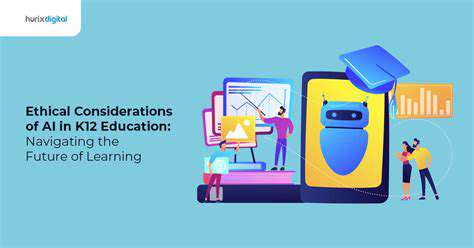
Navigation Design Considerations
Effective navigation is crucial for user experience. A well-designed navigation system allows users to easily find the information they need, minimizing frustration and maximizing engagement. Poor navigation can lead to a significant drop in user satisfaction and ultimately affect conversion rates. Careful consideration must be given to the overall structure and placement of navigation elements.
Navigation should be intuitive and consistent across the entire website. Users should be able to easily understand how to navigate from one section to another, without having to decipher a complex or confusing system. Clear and concise labels are essential for conveying the purpose of each navigation option.
Mobile-First Approach
Given the prevalence of mobile devices, a mobile-first approach to navigation design is essential. Navigation elements on mobile should be streamlined and easily accessible, often relying on hamburger menus or other compact options. The user experience should be optimized for touch interactions and responsive design principles.
Mobile navigation should prioritize essential content and avoid overwhelming users with excessive options. A clear hierarchy of information should be established to ensure users can easily access the most important content on the smaller screen. This requires careful consideration of visual hierarchy and layout.
Accessibility and Inclusivity
Websites must be designed with accessibility in mind, ensuring that users with disabilities can easily navigate and use the site. This includes providing alternative text for images, keyboard navigation support, and sufficient color contrast for readability. Providing a user-friendly experience for all users is paramount in today's digital landscape.
Accessibility guidelines should be followed meticulously, ensuring compatibility with assistive technologies and accommodating various user needs. Testing with users with disabilities is essential to identify and address any accessibility issues.
Content Structure and Hierarchy
The structure of content on the website directly influences the navigation design. A clear hierarchy of information should be established, organizing related content into logical groupings. This helps users understand the website's structure and find the information they need quickly.
A logical and well-defined sitemap is a crucial component of effective navigation. It provides a visual representation of the website's structure, guiding developers and users alike. This clear structure is essential for a user-friendly experience.
User Testing and Iteration
User testing is an invaluable tool for evaluating the effectiveness of navigation design. Testing with real users helps identify pain points, areas of confusion, and opportunities for improvement. Iterative design based on user feedback is crucial for optimizing the navigation experience.
Thorough user testing should be conducted at various stages of the design process. Gathering feedback and making adjustments based on user behavior data will ensure the most effective navigation possible. This process should be ongoing, and the navigation system should evolve with user feedback and changing needs.
Security and Privacy Considerations
Navigation should incorporate security measures to protect user data. Implementing secure logins, encrypted data transmission, and regular security audits are vital for building trust with users. Protecting user information is a top priority in today's digital landscape.
Privacy policies should be clearly communicated and easily accessible through the navigation structure. Users should understand how their data is collected, used, and protected. Following relevant privacy regulations is paramount.
Read more about The Synergy of Human and Artificial Intelligence in Teaching
Hot Recommendations
- The Gamified Parent Teacher Conference: Engaging Stakeholders
- Gamification in Education: Making Learning Irresistibly Fun
- The Future of School Libraries: AI for Personalized Recommendations
- EdTech and the Future of Creative Industries
- Empowering Student Choice: The Core of Personalized Learning
- Building Community in a Hybrid Learning Setting
- VR for Special Education: Tailored Immersive Experiences
- Measuring the True Value of EdTech: Beyond Adoption Rates
- Addressing Digital Divide in AI Educational Access
- Preparing the Workforce for AI Integration in Their Careers

